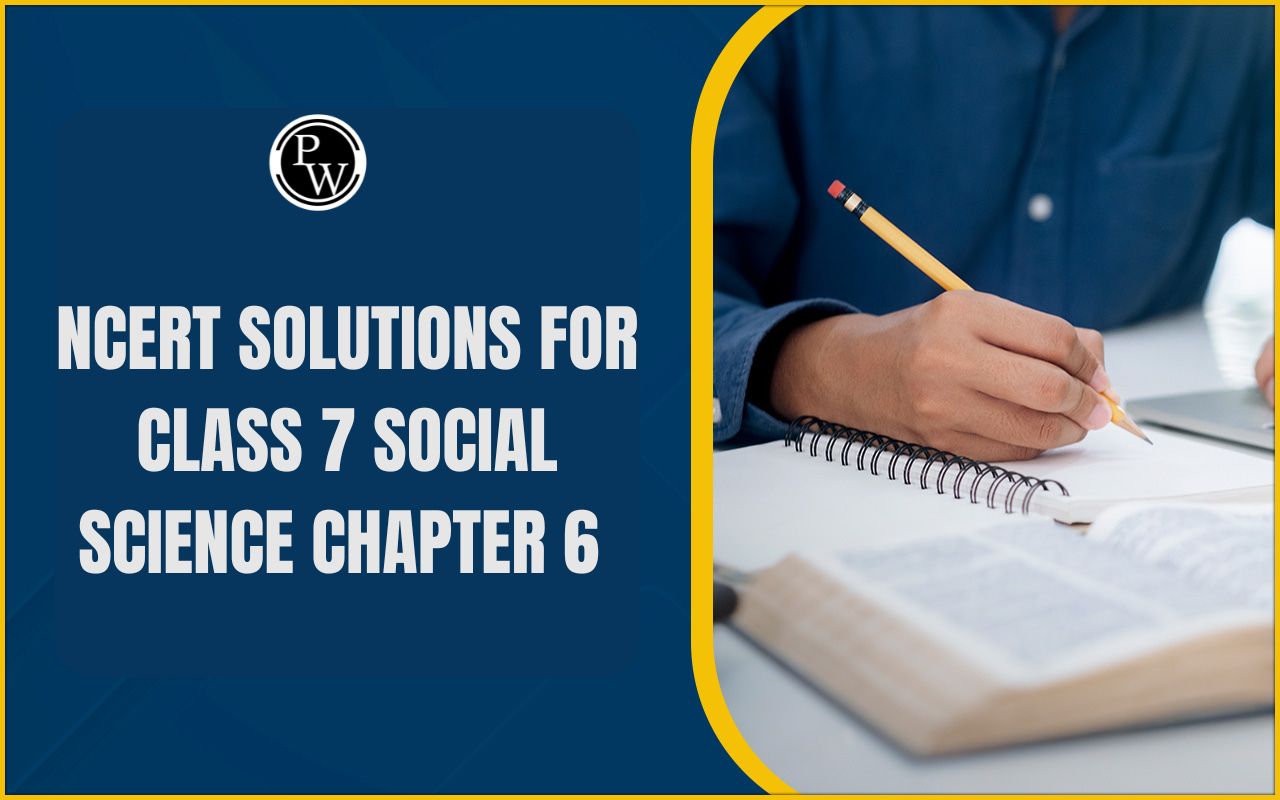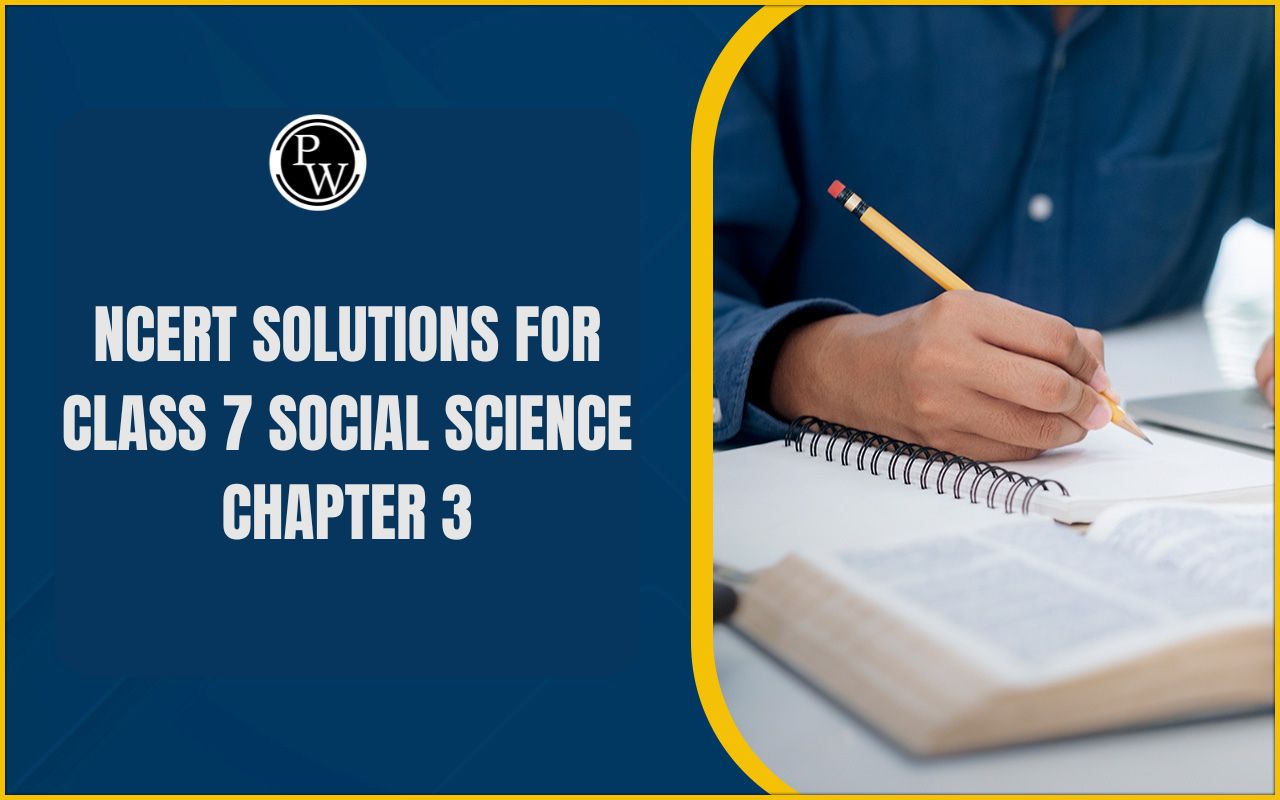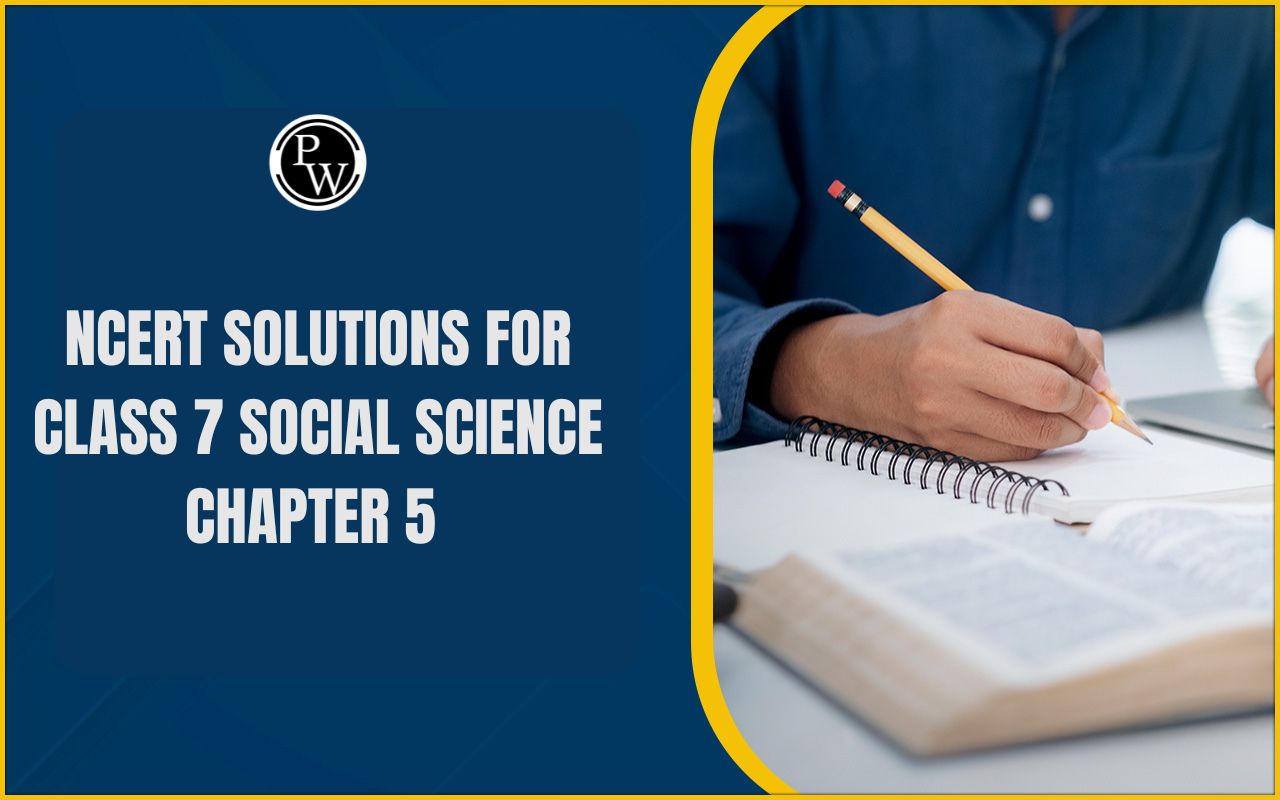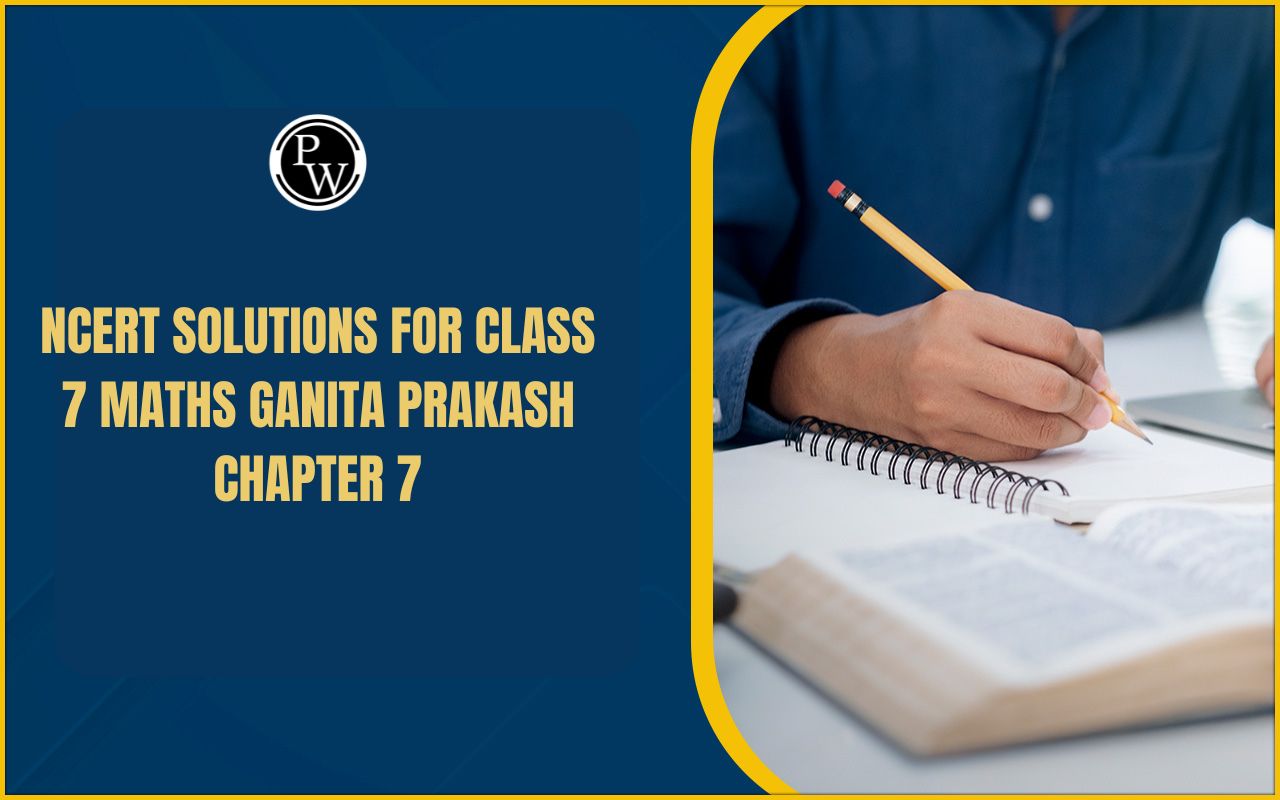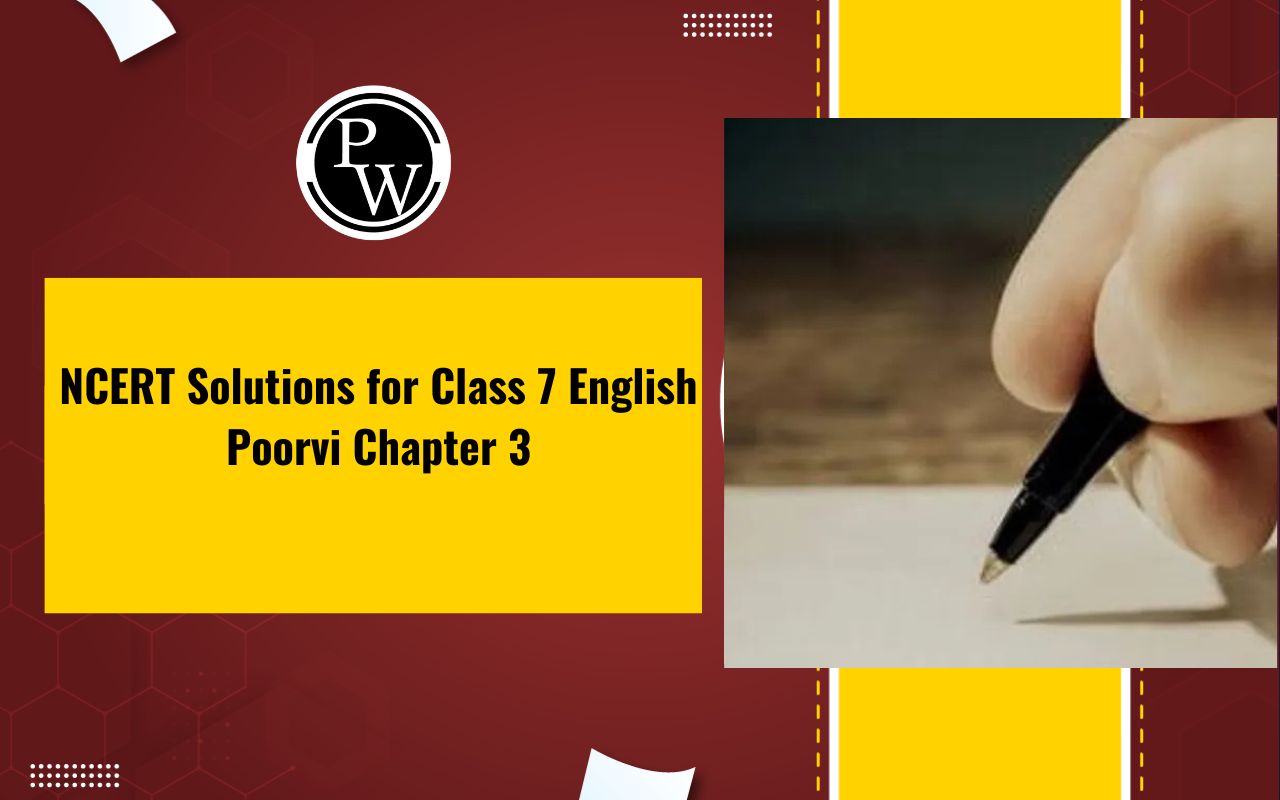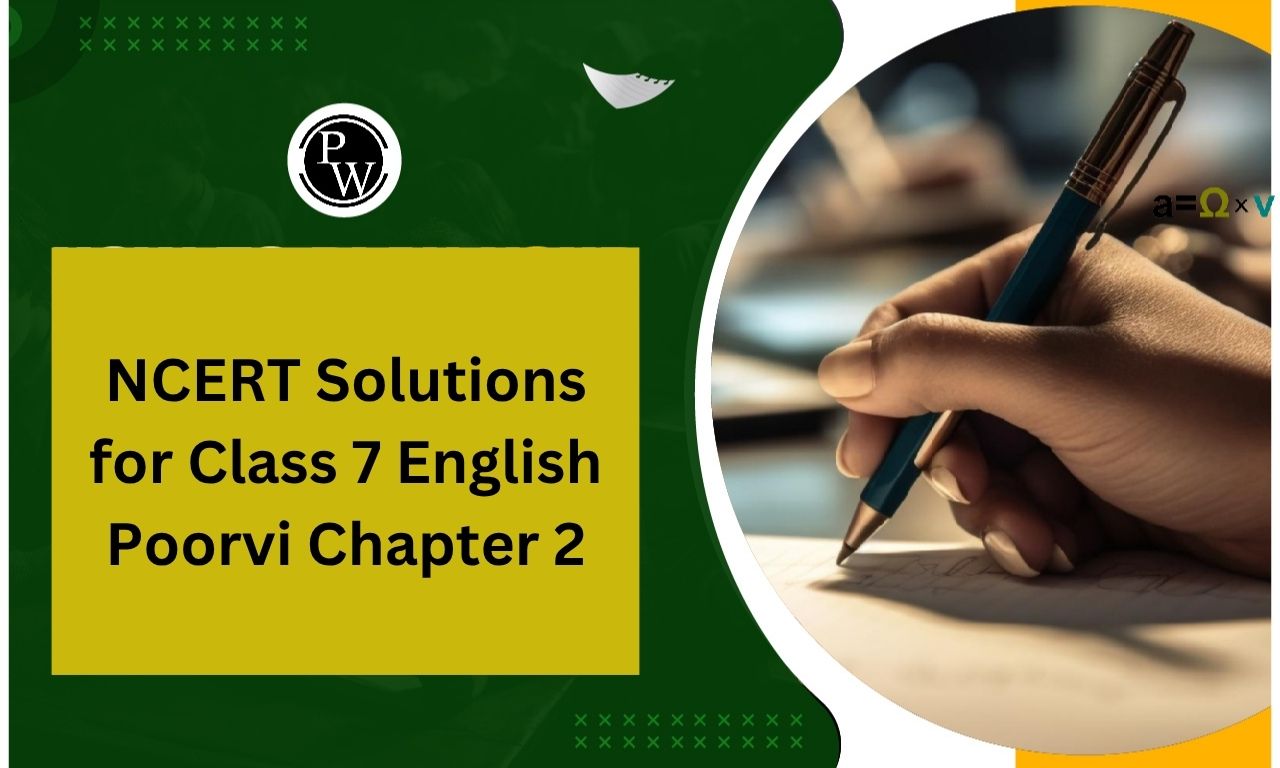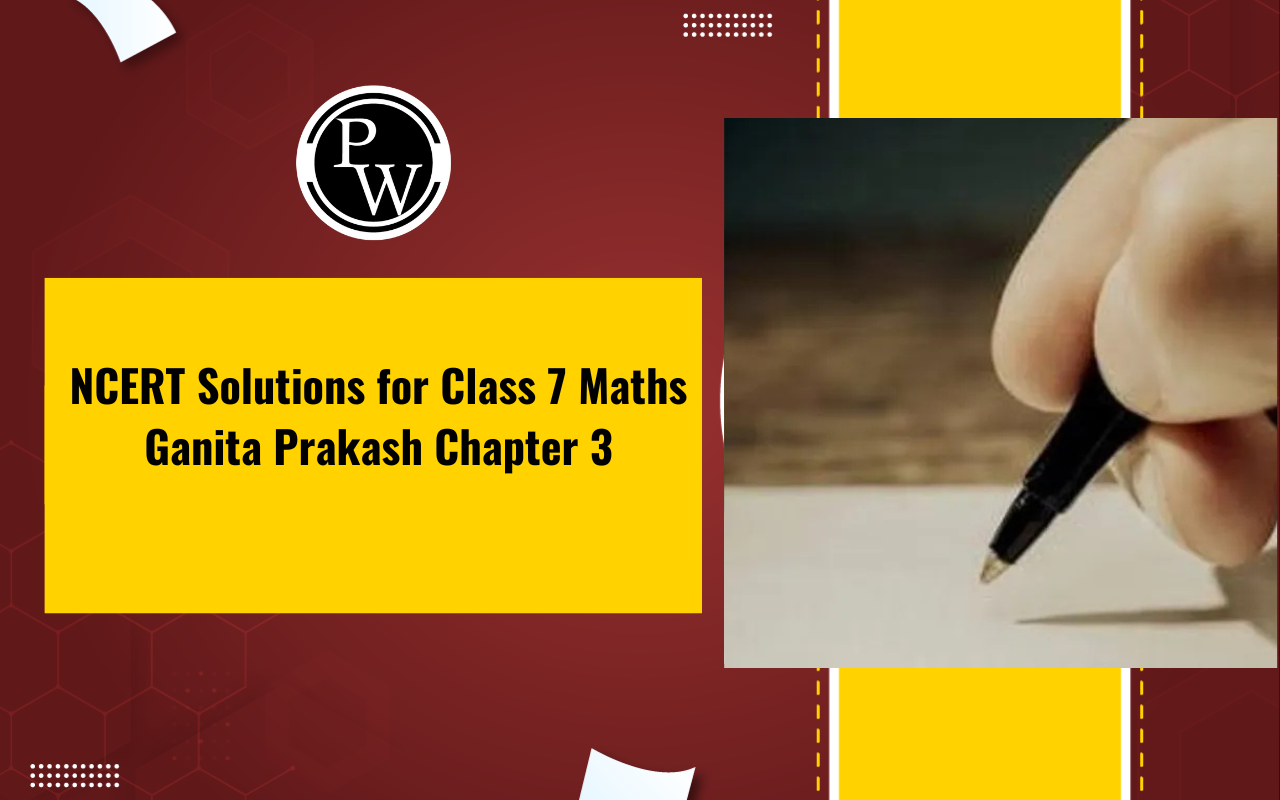
NCERT Solutions for Class 7 Social Science History Chapter 8
NCERT Solutions for Class 7 Social Science History Chapter 8 from Physics Wallah help you learn about how humans have always looked for solace in the divine. It has been our nature to seek direction from unknown forces before we started coming together in large groups and started forming large kingdoms. This article looks into how with the development of infrastructure our search for the divine force expanded. As people got segregated into groups, they started to worship gods and goddesses of their own. Chapter 8 of Class 7’s Social Science History—Devotional Paths to the Divine delves into the history of man’s search for the divine. Our solutions to the questions in the lesson help you form a clear understanding of the subject dealt with in the chapterNCERT Solutions for Class 7 Social Science History Chapter 8 Devotional Paths to the Divine
The NCERT Solutions for Class 7 Social Science History Chapter 8 from us at Physics Wallah are very well written. Containing all relevant information, these solutions provide a detailed account of the subject. The language used when writing the solutions has been kept very simple making sure that even the weaker students face no challenges in comprehending them. The use of correct English ensures that students can score well in their exams. Being easy to understand, the answers boost the confidence of the students helping them ace their exams. Physics Wallah also offers the option for NCERT Solutions for Class 7 Social Science History Chapter 8 PDF Download absolutely free. It’s our noble intention to make these solutions easily accessible to students even in remote places and to those with limited financial means. Since you can download the solutions on your device from the link in this article, you may refer to them anytime, anywhere. Hence, our solutions are a handy tool you can refer to for having your doubts cleared whenever convenient. You’ll find our solutions for Class 7 Social Science History Chapter 8: Devotional Paths to the Divine below. Study them well and ace your exams with ease! 1. Match the following: The Buddha – namghar Shankaradeva – worship of Vishnu Nizamuddin Auliya – questioned social differences Nayanars – Sufi saint Alvars – worship of Shiva Answer: The Buddha – questioned social differences Shankaradeva – namghar Nizamuddin Auliya – Sufi saint Nayanars – worship of Shiva Alvars – worship of Vishnu 2. Fill in the blanks: (a) Shankara was an advocate of………….. (b) Ramanuja was influenced by the …………. (c) ……………., ……….. and ………. were advocates of Virashaivism. (d) ….. was an important centre of the Bhakti tradition in Maharashtra. Answer: (a) Advaita (b) Alvars (c) Basavanna, Allama Prabhu, Akkamahadevi (d) Pandharpur 3. Describe the beliefs and practices of the Nathpanthis, Siddhas, and Yogis. Answer: Beliefs and Practices of the Nathpanthis, Siddhas, and Yogis- Criticism of ritual and other aspects of conventional religion.
- Renunciation of the world.
- Path of salvation in meditation on the formless.
- Ultimate reality and realisation of oneness.
- Intense training of mind and body through practices like yogasanas, breathing exercises, and meditation.
- Rejection of orthodox religion and religious traditions.
- Religion was is accessible to all.
- Criticism of all external worship of Brahmanical Hinduism and Islam
- No caste system.
- Belief in formless God.
- Bhakti and devotion is the only path of salvation.
- He expressed his ideas through couplets.
- Sufis were Muslim mystics. They rejected outward religiosity and gave emphasis on love and devotion to God. They inspired people to be compassionate towards all fellow human beings.
- They rejected idol worship and considerably simplified rituals of worship into collective prayers.
- They believed that the heart can be trained to look at the world in a different way.
- They developed elaborate methods of training using zikr, meaning chanting of a name or sacred formula, contemplation, sama Le. singing, raqs, Le. dancing, discussion of parables, breath control etc. under the guidance of a master called pir.
- Worship of one God.
- Irrelevance of caste, creed, and gender for attaining liberation.
- The pursuit of active life with a strong sense of social commitment.
- Nam, the dam, is the major essence of his teachings.
- Nam-japna, kirt-kama, and vandChakhna basis of right belief, and worship, honest living and helping others.
- The idea of equality.
Very Short Answer Type Questions
- Who were the Pulaiyar and the Panars? Answer: They were considered untouchables
- How many Alvars were there? Answer: There were 12 Alvars.
- Name the two sets of compilations of Nayanar’s songs. Answer: Tevaram and Tiruvacakam.
- Name the set of compilation of Alvars’ songs. Answer: DivyaPrabandham.
- What did Ramanuja propound? Answer: He propounded the doctrine of Vishishtadvaita or qualified oneness in that the soul even when united with the Supreme God remained distinct.
- What is abhang? Answer: It is a Marathi devotional hymn.
- Name any two saints of Maharashtra. Answer: Namdev and Tukaram
- Who were Sufis? Answer: Sufis were Muslim mystics.
- Name any two great Sufis of Central Asia. Answer: Ghazzali and Rumi.
- What was known as dharmsal? Answer: Baba Guru Nanak created a sacred place which was known as dharmsal. It is now known as Gurudwara.
- To whom did Baba Guru Nanak appoint as his successor? Answer: Guru Nanak appointed Guru Angad, one of his followers, as his successor.
- What is Guru Granth Sahib? Answer: Guru Granth Sahib is the holy scripture of the Sikhs.
- Why did the Mughal emperor Jahangir order the execution of Guru Aijan in 1606? Answer: The Mughal emperor Jahangir looked upon the Sikh community as a potential threat and therefore he ordered the execution of Guru Aijan.
- Who compiled the compositions of Baba Guru Nanak? Answer: Guru Angad compiled the compositions of Baba Guru Nanak.
CBSE Board Exam Centre List 2024
Short Answer Type Questions
1. Who was Ramanuja? What are the main points of his preachings? Answer: Ramanuja was a Bhakti saint. He was born in Tamil Nadu in the 11th century. He was deeply influenced by the Alvars. The main points of his preachings are :- Ramanuja taught people that the best means of attaining salvation was through intense devotion to Vishnu. Vishnu in His grace helps the devotee to attain the bliss of union with Him.
- He propounded the doctrine of Vishishtadvaita or qualified oneness in that the soul even when united with the Supreme God remained distinct.
Long Answer Type Questions
1. Write in brief about the ideas of Shankara and Ramanuja. Answer: Shankara. He was one of the most Influential philosophers of India. He was bom in Kerala in the eighth century. He was an advocate of Advaita or the doctrine of the oneness of the individual soul and the Supreme God, the Ultimate Reality. He taught that Brahman, the only or Ultimate Reality, was formless and without any attributes. He considered the world around us to be an illusion or maya, and preached renunciation of the world and adoption of the path of knowledge to understand the true nature of Brahman and attain salvation. Ramanuja. He was bom in Tamil Nadu in the eleventh century and was deeply influenced by the Alvars. He preached that the best means of attaining salvation was through intense devotion to Vishnu. Vishnu in His grace helps the devotee to attain the bliss of union with Him. He propounded the doctrine of Vishishtadvaita of qualified oneness in that the soul even when united with the Supreme God remained distinctNCERT Solutions for Class 7 Social Science History Chapter 8 Important Questions and Answers
Very Short Answer Type Questions
- What did the Puranic stories consist of? Answer: The Puranic stories consisted of local myths and legends
- What are namghars? Answer: They are houses of recitation and prayer, a practice that continues even today.
- What did the terms ‘nam’, ‘dan’ and ‘isnan’ mean? Answer: The terms nam, dan and isnan meant right worship, welfare of others and purity of conduct.
| CBSE Syllabus Class 7 | |
| CBSE Class 7 English Syllabus | CBSE Class 7 Math Syllabus |
| CBSE Class 7 Social Science Syllabus | CBSE Class 7 Science Syllabus |
Short Answer Type Questions
1. Who were the Nayanars and Alvars? Write about them in brief. Answer: The Nayanars and Alvars led religious movements in south India during the seventh to ninth centuries. The Nayanars were devotees of Shiva while the Alvars were the devotees of Vishnu. They came from all castes including those considered ‘untouchable’ like the Pulaiyar and the Panars. They preaohe^gjgdent love of Shiva or Vishnu as the path to salvation. They went from place to place composing beautiful poems in praise of the deities enshrined in the villages they visited and set them to music. There were 63 Nayanars who belonged to different caste backgrounds. There were 12 Alvars who came from equally divergent backgrounds. 2. What do you mean by Khanqahs? What purpose did it serve? Answer: Khanqahs were houses of rest for travellers especially one kept by a religious order. Sufi masters usually held their assemblies here. Devotees of all descriptions including members of the royalty and nobility, and ordinary people flocked to these Khanqahs. Here, they discussed spiritual matters, sought the blessings of the saints in solving their worldly problems or simply attended the music and dance sessions. 3. “The songs are as much a creation of the saints as of generations of people who sang them.’ Explain. Answer: The works of the saints were composed in regional languages and could be sung. They became very popular and were handed down orally from one generation to another. Usually, the most deprived communities and women transmitted these songs. They even added their own experiences to them. Thus, the songs as we have them today are as much a creation of the saints as of generations of people who sang them. They have become a part of our living culture. 4. Why was the Mughal emperor Jahangir hostile to the Sikh community? How did the Sikh movement gain momentum? Answer: By the beginning of the 17th century the town of Ramdaspur, Amritsar had developed around the central Gurudwara known as Harmandar Sahib, the Golden Temple. It was a virtually self-governing body and the modem historians refer to the early 17th-century Sikh community as ‘a state within a state’. This made the Mughal emperor Jahangir hostile to the Sikh community. He looked upon them as a potential threat and he ordered the execution of Guru Aijan in 1606. It is from this time the Sikh movement began to gain momentum. It was a development that culminated, in the institution of the Khalsa by Guru Gobind Singh in 1699.Long Answer Type Questions
1. Write a brief note on new religious developments in north India. Answer: During the thirteenth century a new wave of the Bhakti movement began in north India. This was an age when Islam, Brahmanical Hinduism, Sufism, various strands of Bhakti, and the Nathpanths, Siddhas and Yogis influenced one another. Ordinary people such as craftspersons, peasants, traders, etc. showed their interest in listening to these new saints. Kabir and Baba Gum Nanak did not approve orthodox religious. Tulsidas and Surdas accepted existing beliefs and practices but wanted to make these accessible to all. Tulsidas conceived of God in the form of Rama. His Ramacharitmanas is a unique creation, Surdas was an ardent devotee of Krishna. His compositions compiled in the Sursagara, Sursaravali and SahitgaLahari, express his devotion. Shankaradeva of Assam emphasised devotion to Vishnu and composed poems and plays in Assamese. He began the practice of setting up namghars or houses of recitation and prayer. Saints like Dadu Dayal, Ravidas and Mirabai are worth-mentioning here. Mirabai was a Rajput princess and was married into the royal family of Mewar in the 16th century. She became a disciple of Ravidas, an untouchable saint. She devoted her life to Lord Krishna. She composed a number of bhqjans expressing her intense devotion. A unique feature of most of the saints is that their works were composed in regional languages and could be sung. Therefore, they became very popular among the common mass.NCERT Solutions for Class 7 Social Science History Chapter 8 FAQs
How can I enhance my knowledge on the subject?
The internet is a treasure trove of knowledge. We recommend that you search the internet extensively to know more about the subject discussed in this chapter. Referring to books on the subject shall also help immensely.
What do these solutions teach me?
The solutions in this article teach you about mankind’s search for divinity. It tells you about the saints of early India and the how some of India’s socio-religious movements were born.
Does what’s been discussed in this chapter hold any significance today?
Knowing about the search for the divine in Indian history does help us to find peace within ourselves. Learning about the preaching of the holy men and women who traversed India helps us find solace in the stressful world of today.
How can I gain easy access to these solutions?
You can gain easy access to these solutions by downloading the PDF file from the link given in the article absolutely free. After the download, you can access the file anytime and anywhere you want to.
What are the challenges I may face in studying Class 7 Social Science History?
It has often been a challenge for students to remember the chronology of the many events and their dates. Our solutions in simple language help students comprehend the concepts better and retain them as well.
🔥 Trending Blogs
Talk to a counsellorHave doubts? Our support team will be happy to assist you!

Free Learning Resources
PW Books
Notes (Class 10-12)
PW Study Materials
Notes (Class 6-9)
Ncert Solutions
Govt Exams
Class 6th to 12th Online Courses
Govt Job Exams Courses
UPSC Coaching
Defence Exam Coaching
Gate Exam Coaching
Other Exams
Know about Physics Wallah
Physics Wallah is an Indian edtech platform that provides accessible & comprehensive learning experiences to students from Class 6th to postgraduate level. We also provide extensive NCERT solutions, sample paper, NEET, JEE Mains, BITSAT previous year papers & more such resources to students. Physics Wallah also caters to over 3.5 million registered students and over 78 lakh+ Youtube subscribers with 4.8 rating on its app.
We Stand Out because
We provide students with intensive courses with India’s qualified & experienced faculties & mentors. PW strives to make the learning experience comprehensive and accessible for students of all sections of society. We believe in empowering every single student who couldn't dream of a good career in engineering and medical field earlier.
Our Key Focus Areas
Physics Wallah's main focus is to make the learning experience as economical as possible for all students. With our affordable courses like Lakshya, Udaan and Arjuna and many others, we have been able to provide a platform for lakhs of aspirants. From providing Chemistry, Maths, Physics formula to giving e-books of eminent authors like RD Sharma, RS Aggarwal and Lakhmir Singh, PW focuses on every single student's need for preparation.
What Makes Us Different
Physics Wallah strives to develop a comprehensive pedagogical structure for students, where they get a state-of-the-art learning experience with study material and resources. Apart from catering students preparing for JEE Mains and NEET, PW also provides study material for each state board like Uttar Pradesh, Bihar, and others
Copyright © 2025 Physicswallah Limited All rights reserved.
Get App

